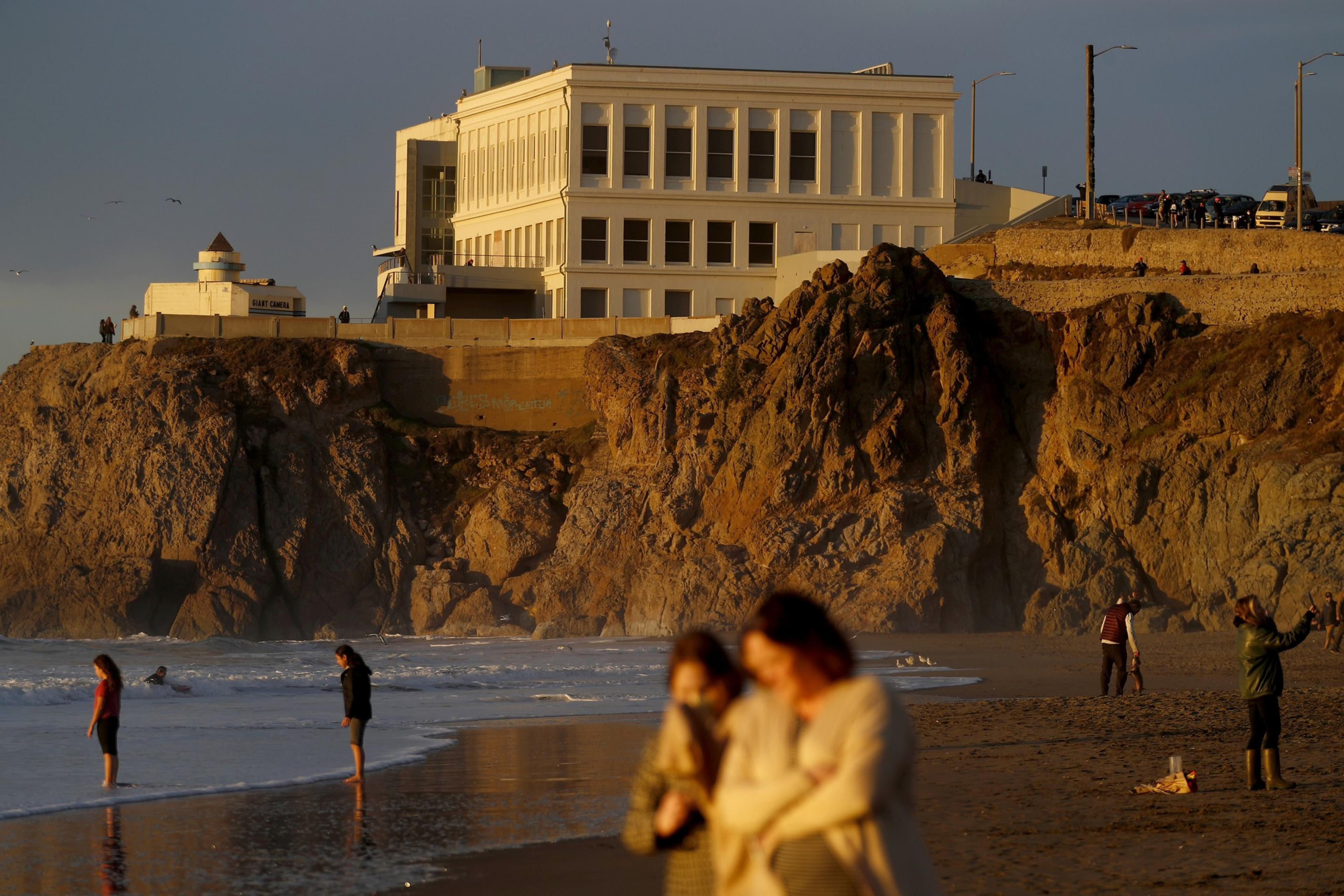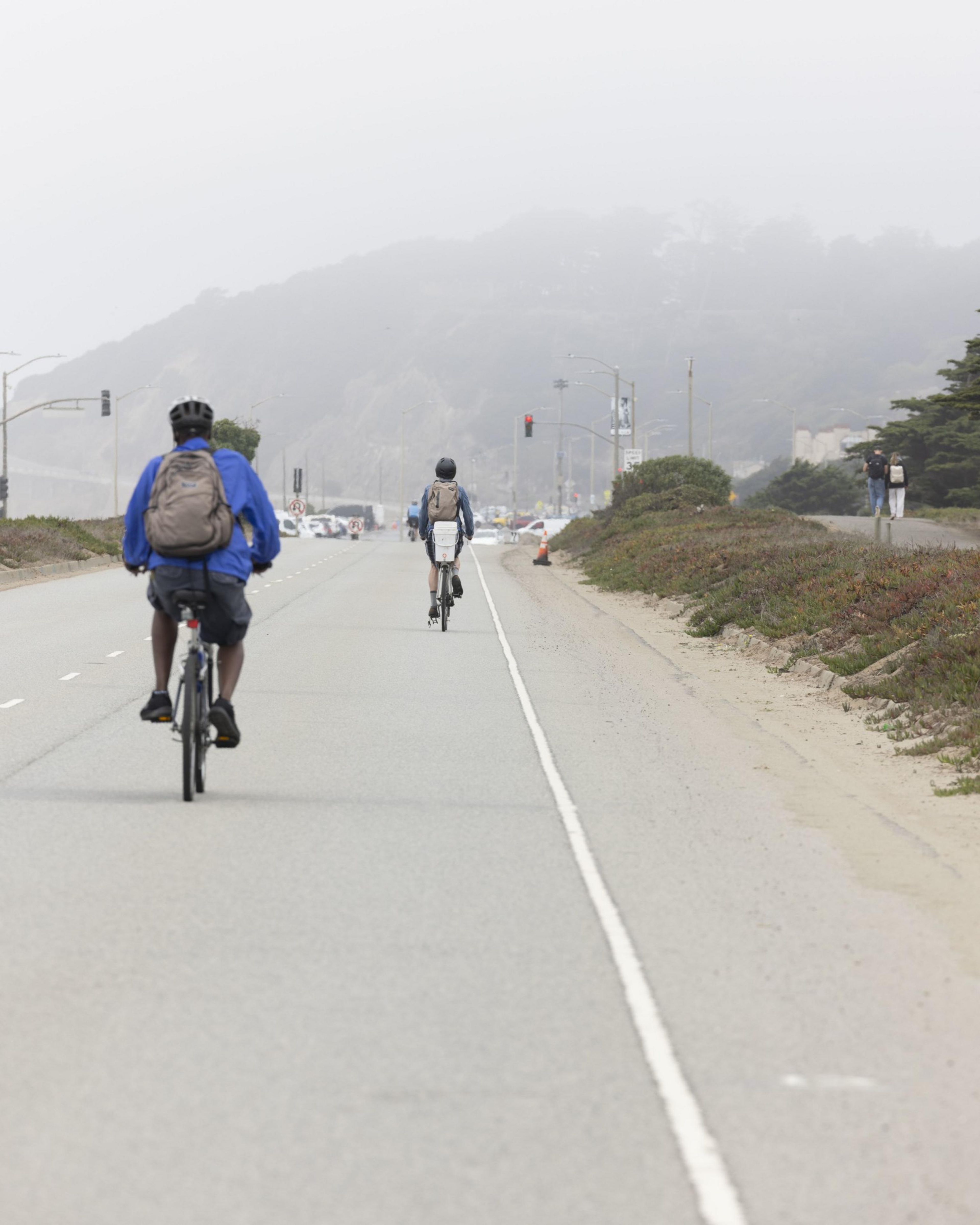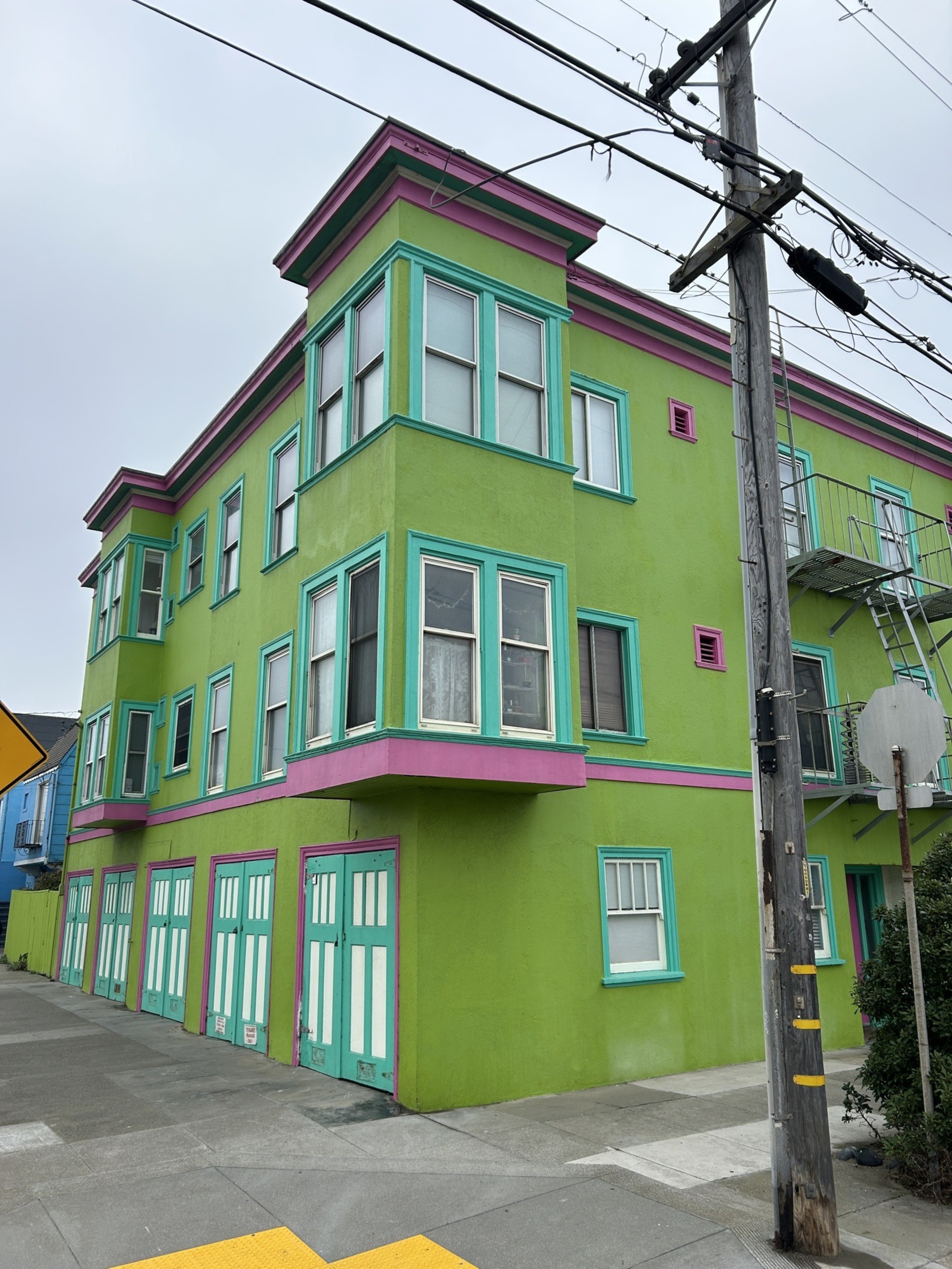Proposition K, which would close a section of the Great Highway to vehicles forever, is proving to be among the most controversial measures that San Francisco voters will decide in November. To its supporters, Prop. K is a once-in-a-generation chance to create an oceanfront park in an urban area, while detractors envision extra traffic, long commutes and exhaust.
In addition to the proposed Ocean Beach Park (opens in new tab), there’s another potential consequence to closing part of the Great Highway: the city’s famed 49-Mile Scenic Drive.
Created in the 1930s as an efficient way to show off city landmarks to visitors to the 1939 Golden Gate International Exposition — including the still-new Bay and Golden Gate bridges — it’s a sentimental curio marked by its signature (and often-stolen) road signs, with a minimalist, beady-eyed seagull against a sky-blue background.

The looping route starts in Civic Center and winds through one-of-a-kind neighborhoods (opens in new tab) like Chinatown and Twin Peaks, as well as a particularly unglamorous stretch of Cesar Chavez Street, before slaloming through the Presidio on its way to the ocean and around Lake Merced. To Outer Richmond District resident Kay Voyvodich, the Great Highway is a vital transportation artery, but the Scenic Drive is something much more, a sacrosanct civic treasure.
“Prop. K should be voted against to preserve the Scenic Drive alone,” she said. “I’m sure that no other portion of the 49-Mile Scenic Drive of San Francisco is as beautiful and as joyful and as pleasurable as this.”
Expressing a common sentiment among west side residents — judging by Nextdoor comments on the topic (opens in new tab), at least — Voyvodich believes her car-centric neighborhood is being railroaded. Prop. K boosters are inflating the proposed park’s popularity, she says, and City Hall is under the thumb of car-loathing transportation activists. She’s also suspicious of the timing of an impending project on nearby 19th Avenue, a major transit axis whose closure will wreak havoc on the Sunset District for two-and-a-half years (opens in new tab).
Still, Voyvodich claims to be an advocate for more green spaces. “I’m not against the idea of there being a park,” she said. “What I’m against is the idea of closing this road, now.”
Fundamentally, it strikes Voyvodich as inappropriate that voters in other neighborhoods should have a say in the Great Highway’s future.
“How the heck would anyone know what’s going on here? I don’t know anything on Valencia Street,” she said, referring to a nightlife corridor in the Mission District that has also been the site of pitched battles over who and what the city’s streets are for.
A road that has always evolved
Nobody seems to know how many people actually drive the 49-Mile Scenic Drive. But as of 2019, before Covid and the road’s closure, an average of 20,000 vehicles used the Great Highway every day, a number that fell by 38% in 2022, according to the SFMTA (opens in new tab), more than three times the combined number of cyclists and pedestrians in a study conducted in 2020 to ’21 (opens in new tab).
Curiously, the Great Highway isn’t managed by the San Francisco Municipal Transportation Agency. It’s been under the jurisdiction of Rec and Park since the 1870s (opens in new tab), meaning the city considers it to be a space for recreation — and, essentially, always has.

Further, Prop. K or no Prop. K, hairline cracks have been appearing in the highway’s greatness for some time. The eight travel lanes were reduced to four in the 1980s, wind-driven sand frequently closes the whole thing for days at a time — once for an entire month (opens in new tab) — and coastal erosion means the entire section south of Sloat Boulevard will be mothballed only two years from now.
Tough break for the crown jewel of San Francisco city driving — although, like the sand drifts that occasionally smother the Great Highway, the 49-Mile Scenic Drive is anything but static. At various points in its history, it has delivered car-borne pilgrims to Treasure Island and through McLaren Park (opens in new tab). (Technically, it’s discontinuous already, as cars are no longer permitted to drive up and over Twin Peaks Boulevard.) So there’s no reason it can’t change some more, according to Supervisor Joel Engardio, who represents the Sunset District and authored Prop. K.
“It can evolve with the times,” Engardio said, noting that his measure “does not touch the Great Highway on the most breathtaking part, when you’re driving from Lands End to the Cliff House.”

Looking further ahead, Engardio hopes that Sunset Boulevard — another major north-south artery a dozen blocks in from the ocean, and a segment of the 49-Mile Scenic Drive as well — can get a zhuzh of its own. It’s already got fat swaths of green space on either side, plus a median.
“That could become San Francisco’s ‘Emerald Necklace,’ connecting Golden Gate Park with Lake Merced and a potential Ocean Beach Park,” he said. “Cars can get where they need to go, and people can get out and enjoy a park.”
As for 19th Avenue, the neighborhood’s north-south spine — yes, it is set to be repaved starting next year, Engardio confirmed. But that decision was made in Sacramento, as car-clogged 19th Avenue is technically part of Highway 1, also known as the Pacific Coast Highway. So Caltrans, not the city and county of San Francisco, is spearheading that one.
To some activists, all this simply underscores the inconveniences of car-dependency in a densely populated city. For Marta Lindsey, communications director for Walk SF, both the Great Highway and 49-Mile Scenic Drive are little more than 20th century relics, built to show off the newly minted western neighborhoods in what was previously a sparsely inhabited dune-scape.
The circuitous route was “created to spark tourism deeper into the city,” Lindsey said. “I cannot imagine anything more amazing to do that than Ocean Beach Park. That would be 100 times more powerful than the 49-mile route in its heyday.” Two women even wrote a book laying out an alternate route that’s meant to be hiked (opens in new tab), she noted.

To Prop. K backer and fellow transportation advocate Lucas Lux, the Scenic Drive essentially snubs the Outer Sunset, where he lives. “The 49-mile drive route imagines that the only thing to do in our neighborhood is to drive past our neighborhood,” he said.
So why not get creative?
How about a rejiggered 49-Mile Scenic Drive that comes down from Cliff House, passes Golden Gate Park’s windmills and turns inland at Lincoln Way, just as it does from noon every Friday until 6 a.m. the following Monday. Where might it go instead? Huge attractions on the city’s western edge, like Sutro Baths or Playland-at-the-Beach, are long gone, but there’s no shortage of architectural sights, from pink postwar houses to modernist churches.
Lux ticks off a number of neighborhood institutions he’d love visitors to the Sunset to discover, from Java Beach Cafe to Underdogs Cantina to the Great Highway Gallery.
Above all, he urges people to go to either of the Andytown Coffee locations, where the signature beverage is the Snowy Plover (opens in new tab), an effervescent espresso-and-whipped cream drink named for a shorebird that thrives on Ocean Beach.
A park, he believes, would unlock it all: “There’s so much more to our neighborhood than allowing people to go three minutes faster.”
This post has been updated to provide greater detail about the number of users of the Great Highway.